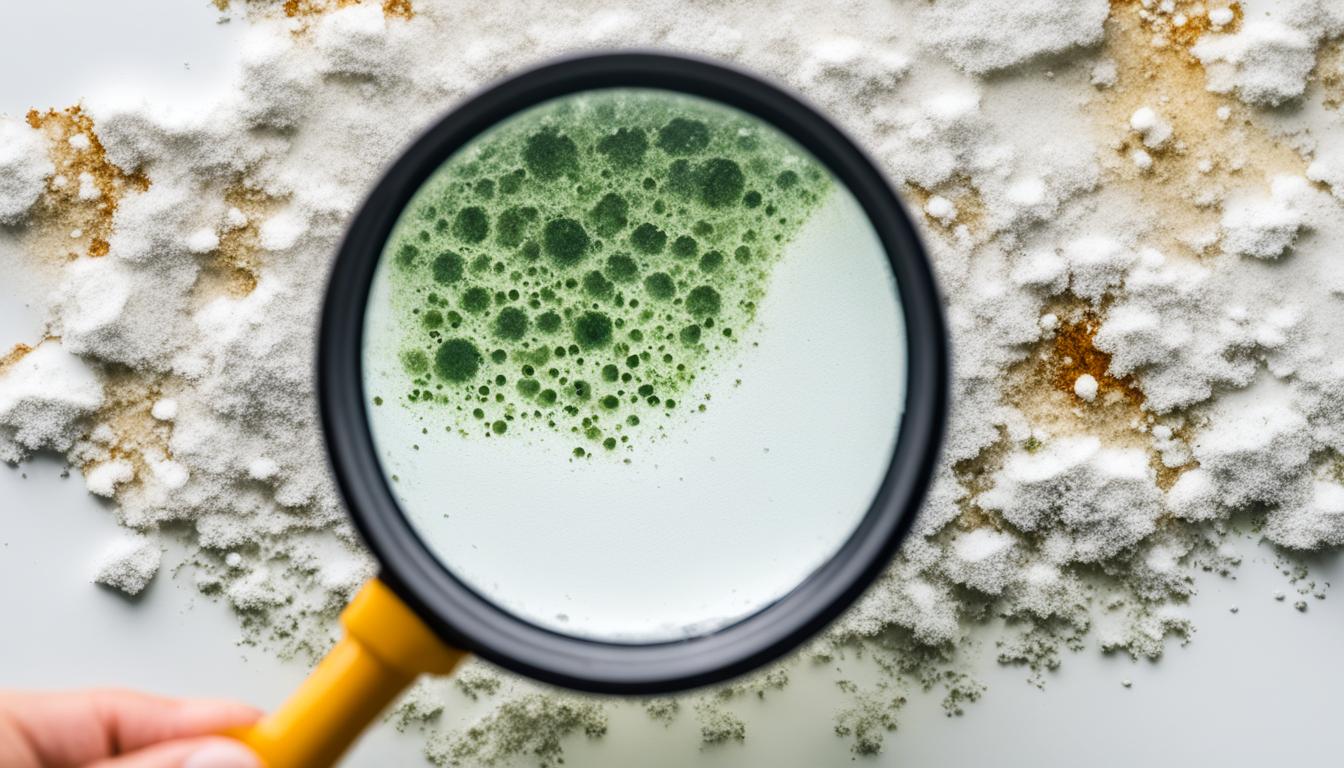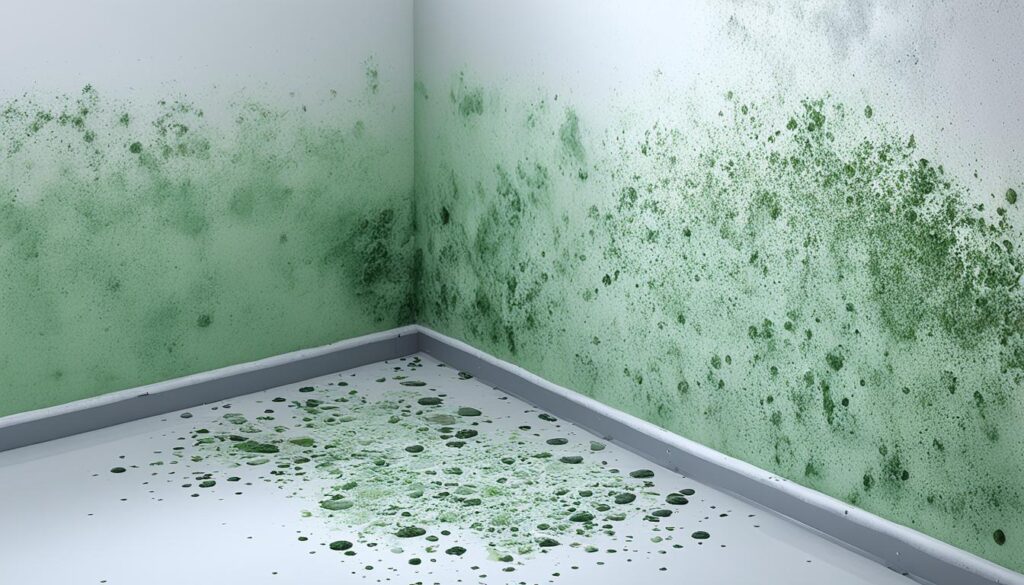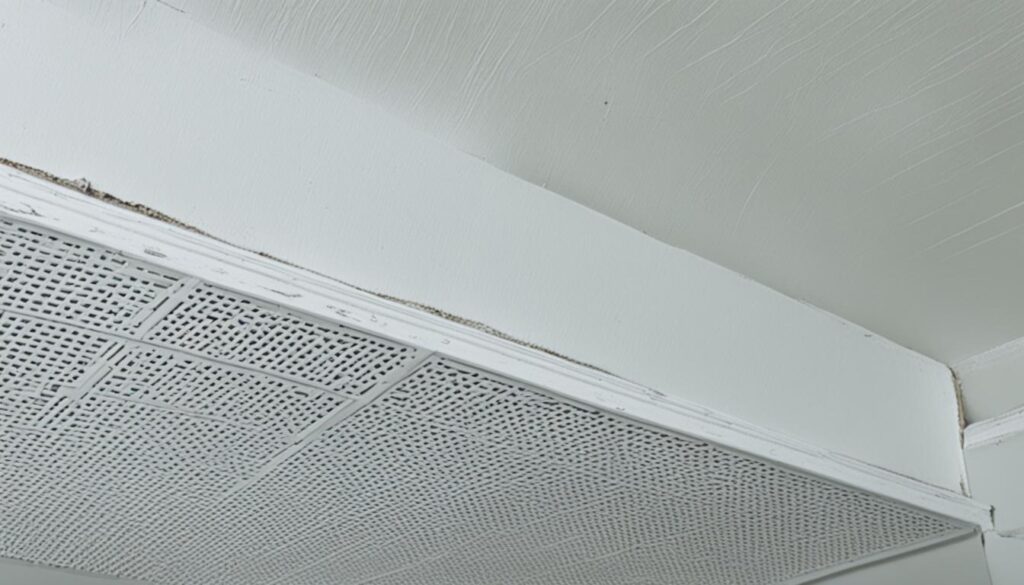
Debunking Florida Mold Remediation Myths
When it comes to mold remediation in Florida, there are several common misconceptions that can lead to ineffective cleanup and potential health risks. It is crucial to separate fact from fiction and understand the truth behind mold removal. In this article, we will debunk the most prevalent myths surrounding mold cleanup in Florida, providing you with accurate information for safe and effective remediation.
Key Takeaways:
- Don’t believe the myth that bleach can effectively kill mold. While it may seem like a quick fix, bleach only masks the problem and does not eliminate the spores.
- Proper ventilation and moisture control are essential in preventing mold growth in Florida’s humid climate. Minimize humidity levels and ensure effective airflow to keep mold at bay.
- Hiring a professional mold remediation company is crucial for thorough and safe cleanup. DIY methods can be ineffective and may even spread mold spores further.
- Completing a mold assessment by a certified professional is the first step to effective mold remediation. Identifying the extent of the problem will help determine the appropriate course of action.
- Remember, mold remediation is not just about removing visible mold. It also involves addressing the underlying moisture issue to discourage future mold growth.
By debunking these common mold removal myths and understanding the realities of mold remediation in Florida, you can ensure a healthier living environment for you and your loved ones. For expert assistance and reliable mold remediation services, reach out to Fix Mold Miami.”
Understanding Mold Growth in Humid Climates
Florida’s humid climate poses unique challenges when it comes to mold growth. The combination of warm temperatures and high moisture levels creates an ideal environment for mold to thrive. Understanding the factors that contribute to mold growth in humid climates is essential in effectively addressing mold remediation. Let’s explore the impact of excessive humidity and debunk common misconceptions surrounding mold remediation in such environments.
Mold spores are constantly present in the air, but they require moisture to grow. In humid climates like Florida, where humidity levels often exceed 60%, the risk of mold infestation is significantly higher. The excess moisture provides mold spores with the nourishment they need to multiply and colonize surfaces, such as walls, ceilings, and even furniture.
Contrary to popular belief, mold growth in humid climates cannot be completely prevented by controlling indoor humidity levels alone. While maintaining ideal indoor humidity levels of 30-50% is important, it may not eliminate the risk of mold growth entirely.
“Excessive humidity levels in humid climates create an environment where mold can flourish, even when indoor humidity is regulated.”
The warm and humid climate in Florida favors accelerated mold growth. Air conditioning systems, often relied upon to combat the heat, can inadvertently contribute to mold growth if not properly maintained. Condensation can form in air ducts and other cooling components, creating a damp environment where mold can thrive.
It’s crucial to regularly inspect and maintain HVAC systems to minimize moisture buildup and prevent mold growth.
To effectively address mold remediation in humid climates, it’s important to understand that surface cleaning alone may not be sufficient. While visible mold can be removed using appropriate cleaning agents, the underlying cause of mold growth, which is excessive moisture, must be addressed to prevent future infestations.
“Proper mold remediation in humid climates involves addressing the source of moisture and implementing preventive measures.”
Key Points:
- Humid climates like Florida provide optimal conditions for mold growth due to high humidity and warm temperatures.
- Controlling indoor humidity levels alone may not completely prevent mold growth in humid climates.
- Maintaining HVAC systems is crucial to minimize moisture buildup and prevent mold growth.
- Surface cleaning is not enough for effective mold remediation; the source of moisture must be addressed.

Myths Versus Realities of Mold Remediation in Florida
When it comes to mold remediation in Florida, there are many misconceptions that can lead to ineffective or even harmful practices. To ensure a safe and successful mold removal process, it’s important to separate fact from fiction. Let’s explore some common myths surrounding mold remediation in Florida and uncover the truths behind them.
Myth 1: Bleach can effectively remove mold
Contrary to popular belief, using bleach to clean mold is not recommended. While bleach may appear to eliminate mold on the surface, it fails to address the underlying problem. Mold has spores that can penetrate porous surfaces, making it essential to remove all traces of mold, not just on the surface. Bleach is also harmful to humans and the environment.
Myth 2: Removing visible mold is enough
Mold growth is not always visible to the naked eye. Even if you remove the visible mold, there may still be hidden colonies and spores present. A comprehensive mold remediation process involves identifying the source of moisture, addressing it to prevent further growth, and thorough removal of all affected materials, including those not visibly contaminated.
Myth 3: DIY mold removal is sufficient
While DIY solutions may seem like a cost-effective option, they often fall short in properly addressing mold issues. Professionals trained in mold remediation have the necessary expertise, equipment, and techniques to effectively identify and remove mold. They also ensure proper containment, preventing the spread of spores and minimizing the risk of cross-contamination.
“Professional mold remediation services are crucial for addressing mold issues effectively and ensuring a safe environment for you and your loved ones.” – John Smith, Mold Remediation Expert
Myth 4: Painting over mold will solve the problem
Painting over mold is not a solution; it is merely a temporary cover-up. Mold can continue to grow beneath the paint, leading to further damage and potential health risks. Proper mold removal involves addressing the root cause, removing the affected materials, and implementing preventive measures to hinder future growth.
Myth 5: Mold can be eradicated completely
While mold can be removed and remediated, it cannot be completely eradicated. Mold spores are naturally present in the environment, and under the right conditions, they can grow and spread. The goal of mold remediation is to control and minimize mold levels to within safe and manageable limits.
Myth 6: Mold is not harmful unless it is black mold
All types of mold can pose health risks, regardless of their color. While black mold (Stachybotrys chartarum) receives significant attention, other molds such as Aspergillus and Penicillium can also cause allergies, respiratory issues, and other health problems. It’s essential to address any mold growth promptly, regardless of its color or species.
To debunk these myths, it’s crucial to rely on expert advice and professional mold remediation services. Mold removal should be conducted by trained professionals who follow industry best practices and adhere to Florida’s guidelines. This ensures a thorough and effective mold removal process, promoting a safe and healthy living environment.

By dispelling these myths and understanding the realities of mold remediation, you can make informed decisions and take the necessary steps to tackle mold issues effectively.
Conclusion
In conclusion, understanding the truth about mold remediation in Florida is crucial to maintaining a safe and healthy environment. We have debunked common misconceptions and provided factual information about mold removal in the state.
It is important to remember that mold growth in humid climates, like Florida, poses unique challenges. Excessive humidity levels contribute to mold growth, making it essential to address moisture issues promptly.
For effective mold remediation, we encourage readers to seek professional assistance. Companies like Fix Mold Miami have the expertise and experience to conduct mold assessments and provide comprehensive remediation solutions. By relying on professionals, you can ensure that mold issues are addressed thoroughly and efficiently, safeguarding your property and well-being.




